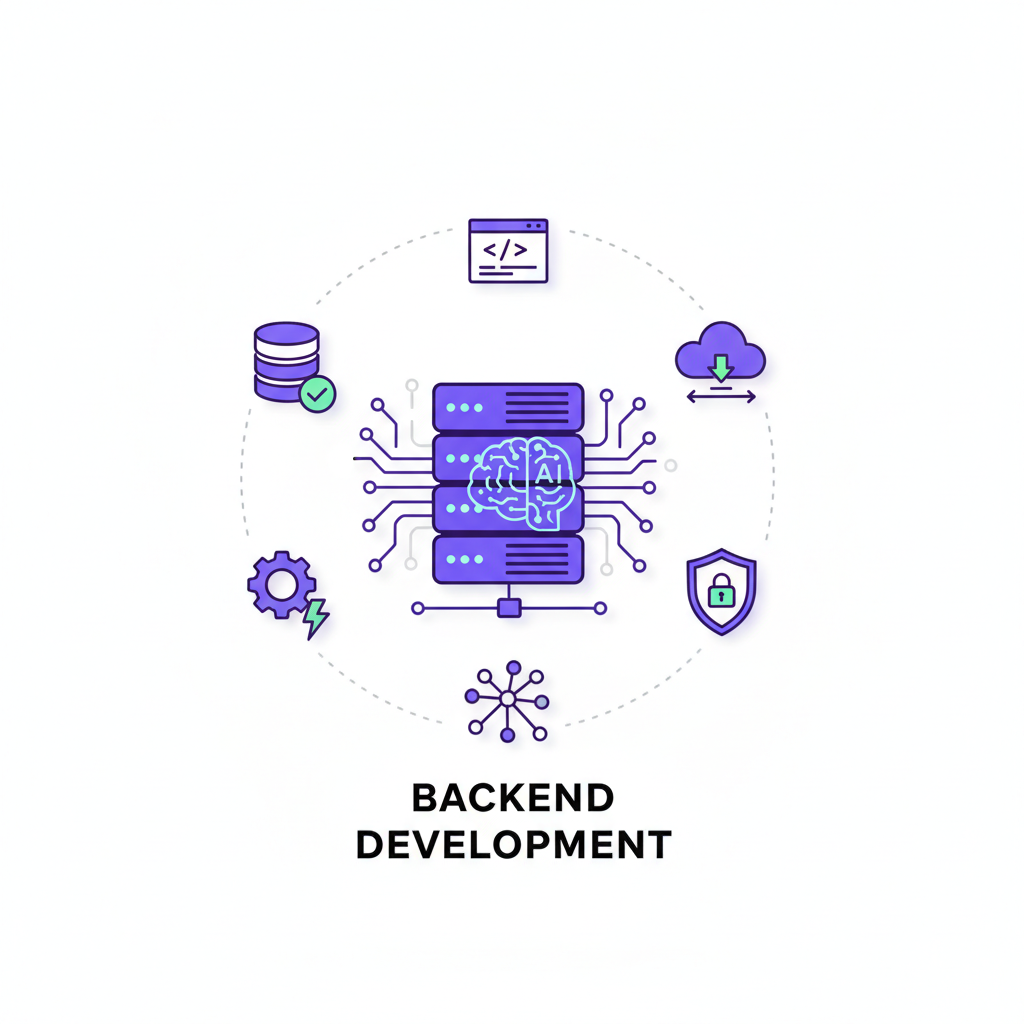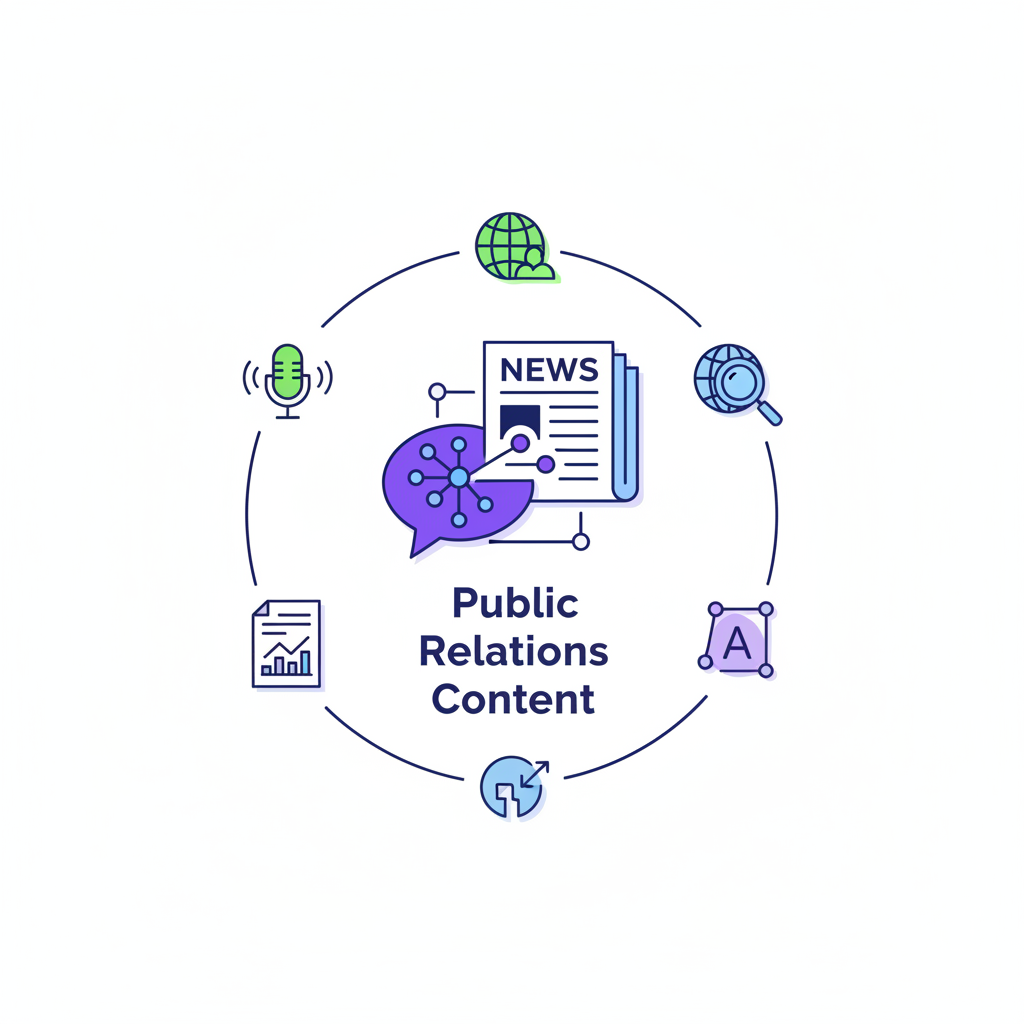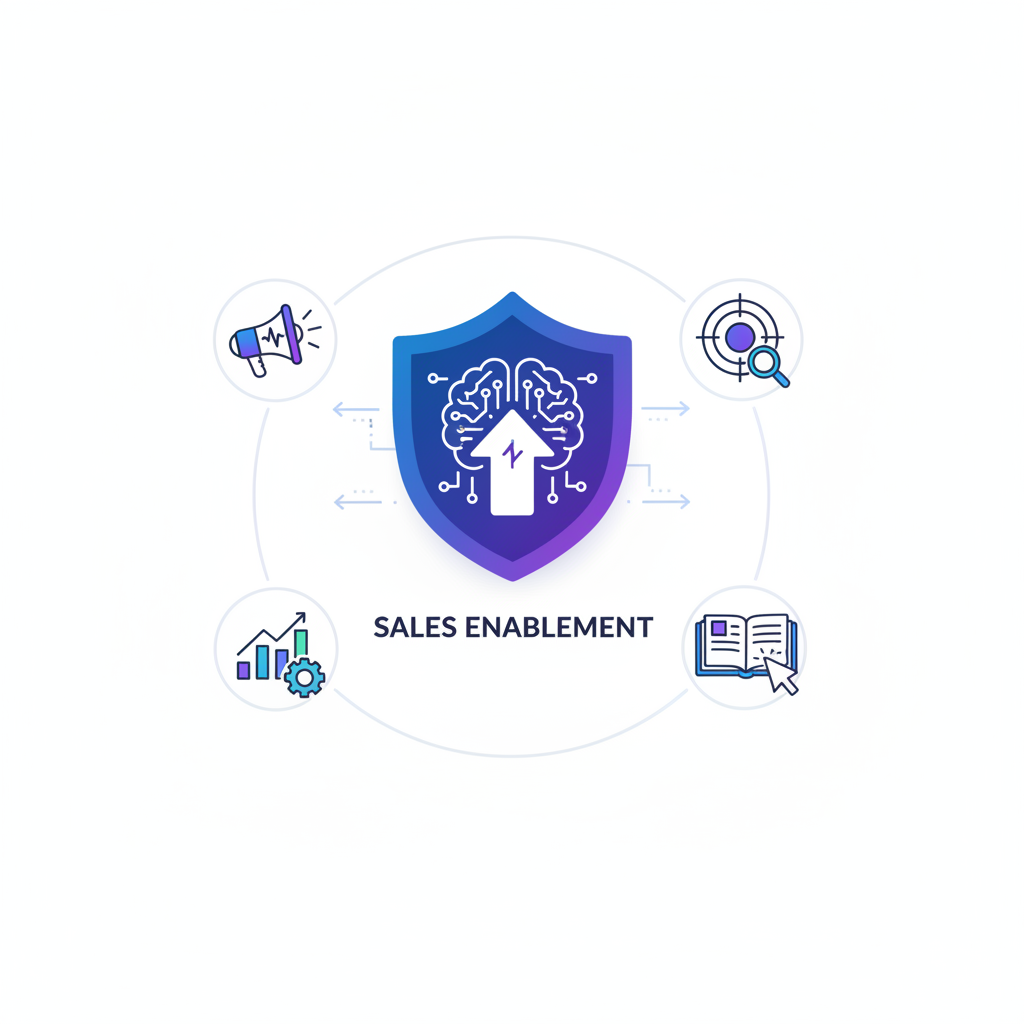Top 10 AI Tools for Backend Development
AI is transforming backend engineering. Discover the top 10 AI tools—from pair programmers like GitHub Copilot and Tabnine to security scanners like Snyk Code and observability platforms like Datadog Watchdog—that augment developers to build sophisticated, secure, and efficient backend systems faster than ever before.

The landscape of software development is undergoing a seismic shift, driven by the rapid advancements in artificial intelligence. Nowhere is this transformation more profound than in backend development, the intricate engine room of modern applications. Traditionally, backend engineering has been a discipline of complex logic, meticulous database management, and robust API construction. Today, AI is augmenting these core responsibilities, empowering developers to build more sophisticated, secure, and efficient systems at an unprecedented pace.
AI tools are no longer a futuristic novelty; they are becoming an indispensable part of the modern developer's toolkit. They act as intelligent assistants, capable of generating boilerplate code, identifying subtle security vulnerabilities, optimizing complex database queries, and even refactoring entire codebases for better performance and maintainability. By automating repetitive and time-consuming tasks, these tools free up developers to focus on what truly matters: solving complex business problems and architecting innovative solutions.
This article serves as a comprehensive guide to the most impactful AI tools available for backend developers today. We will dive deep into the top 10 platforms that are revolutionizing how server-side applications are built, tested, and maintained. From AI-powered code completion to intelligent security analysis and automated documentation, you will discover the tools that can significantly enhance your productivity, improve your code quality, and accelerate your development lifecycle.
Understanding AI's Role in Backend Engineering
Before we explore the specific tools, it's crucial to understand how AI is being applied to the core domains of backend development. AI's impact is not about replacing developers but about augmenting their capabilities. It acts as a force multiplier across several key areas:
- Code Generation and Completion: AI models trained on vast datasets of code can predict and generate code snippets, functions, or even entire classes based on natural language prompts or existing context.
- Debugging and Error Resolution: AI can analyze stack traces, logs, and code patterns to identify the root cause of bugs, suggest potential fixes, and explain complex errors in plain English.
- Performance Optimization: AI algorithms can monitor application performance, analyze database query execution plans, and identify bottlenecks in the code, recommending specific refactoring or indexing optimizations.
- Security Analysis: AI-powered tools can scan code for potential security vulnerabilities, such as SQL injection or cross-site scripting (XSS), with a high degree of accuracy.
- Automated Documentation: AI tools can automatically generate API documentation, code comments, and even comprehensive developer guides, ensuring that the codebase remains understandable and maintainable.
The Top 10 AI Tools for Backend Developers
Here is our curated list of the ten most influential AI tools that are making a significant impact on backend development workflows. We've selected a diverse range of tools that cover everything from coding and debugging to security and documentation.
1. GitHub Copilot
Primary Use Case: AI-powered code completion and generation.
GitHub Copilot, from GitHub and OpenAI, is the leading AI pair programmer. It integrates directly into your IDE (VS Code, PyCharm, etc.), providing intelligent, context-aware code suggestions that turn natural language comments into functional code. It excels at generating boilerplate for RESTful APIs, data models, and CRUD operations.
| Pros | Cons |
|---|---|
| Drastically accelerates coding speed | Suggestions can sometimes be incorrect |
| Excellent multi-language support | May generate insecure code if not reviewed |
| Deep IDE integration | Requires a paid subscription |
2. ChatGPT
Primary Use Case: General-purpose problem-solving and code assistance.
ChatGPT is the versatile, conversational partner for developers. You can use it to debug complex errors, brainstorm architectural designs, generate utility scripts (like a Dockerfile or CI/CD workflow), or explain confusing stack traces in plain English.
| Pros | Cons |
|---|---|
| Extremely versatile for a wide range of tasks | Not a real-time tool; requires context switching |
| Provides detailed explanations and learning | Code may not be production-ready without modification |
| Can assist with high-level architecture | Can produce plausible but incorrect answers ("hallucinate") |
3. Tabnine
Primary Use Case: Personalized and privacy-focused AI code completion.
Tabnine focuses on privacy and personalization. It can be run locally or on a secure cloud and offers the ability to train a private AI model on your team's specific codebase. This makes suggestions highly relevant to internal APIs, custom libraries, and project conventions.
| Pros | Cons |
|---|---|
| Strong focus on code privacy and security | Free version is less powerful than competitors |
| Personalized suggestions from your codebase | Can be resource-intensive when run locally |
| Helps enforce team coding standards | Initial setup for team models can be complex |
4. Amazon CodeWhisperer
Primary Use Case: AI code generation with a focus on AWS services.
CodeWhisperer is optimized for developers building on AWS. It is trained to provide accurate code suggestions for using AWS services and APIs (Lambda, S3, DynamoDB), including proper error handling and permissions logic. It also features integrated security scanning and is free for individual use.
| Pros | Cons |
|---|---|
| Unparalleled support for AWS services | Less effective for non-AWS backend development |
| Integrated security scanning is a major plus | Suggestions can be verbose at times |
| Free for individual use | Not as strong with non-mainstream languages |
5. Snyk Code
Primary Use Case: AI-powered code security analysis.
Snyk Code is a developer-first Static Application Security Testing (SAST) tool. It integrates into your IDE and scans code in real-time, using AI to identify complex security vulnerabilities (like SQL injection) with high accuracy, and providing immediate remediation advice.
| Pros | Cons |
|---|---|
| Proactive security, catching issues early | Can sometimes slow down the IDE performance |
| Excellent educational tool for secure coding | Advanced features are part of a paid subscription |
| Deep integration into the developer workflow | Focus is solely on security, not code generation |
6. MutableAI
Primary Use Case: AI-assisted code refactoring and quality improvement.
MutableAI specializes in improving existing code. It automates refactoring to adhere to best practices, generates comprehensive unit tests, and can even translate entire legacy codebases between programming languages (e.g., Python to Java), drastically reducing technical debt.
| Pros | Cons |
|---|---|
| Directly addresses technical debt | Still an emerging tool with a growing feature set |
| Excellent for modernizing legacy systems | Language translation can be imperfect |
| Test generation saves significant time | Requires careful review of suggested changes |
7. Mintlify
Primary Use Case: Automated documentation generation.
Mintlify solves the problem of outdated documentation by using AI to read code and automatically generate clear, concise explanations for functions and classes. It also hosts the documentation in a beautiful, searchable site and can integrate with CI/CD to keep it continuously updated.
| Pros | Cons |
|---|---|
| Solves the problem of outdated documentation | Primarily focused on documentation, not code itself |
| Produces high-quality, user-friendly sites | Free tier has limitations |
| Continuous documentation via CI/CD | Can require well-commented code for best results |
8. Datadog Watchdog
Primary Use Case: AI-driven anomaly detection and root cause analysis in production.
Datadog's Watchdog uses machine learning to monitor performance metrics, logs, and traces from backend services. It automatically detects anomalies and correlates them to identify the root cause of issues (e.g., a specific code commit or deployment), drastically reducing the mean time to resolution (MTTR).
| Pros | Cons |
|---|---|
| Proactive problem detection in production | Datadog can be expensive at scale |
| Reduces alert fatigue from noisy monitors | Requires proper instrumentation of your application |
| Speeds up troubleshooting and debugging | Can have a steep learning curve for new users |
9. Buildt
Primary Use Case: AI-powered semantic code search and comprehension.
Buildt is an AI search engine for your code. It allows developers to search their codebase using natural language, asking questions like "where is the user profile data stored?" It understands the semantics and purpose of the code to help developers quickly navigate and comprehend unfamiliar or complex microservices.
| Pros | Cons |
|---|---|
| Drastically reduces time to understand code | Still a relatively new tool in the market |
| Great for onboarding new team members | Effectiveness depends on the codebase's structure |
| Intuitive natural language interface | Requires access to your source code |
10. Stepsize AI
Primary Use Case: AI-assisted technical debt management.
Stepsize helps teams manage and prioritize technical debt. It integrates with issue trackers (like Jira) and editors (VS Code) to identify, track, and log code issues that are hindering development velocity, providing the metrics needed to make the business case for refactoring sprints.
| Pros | Cons |
|---|---|
| Makes technical debt visible and actionable | Requires integration with multiple other tools |
| Helps prioritize high-impact refactoring | The value is realized over the long term, not instantly |
| Connects code quality to business impact | Can create additional process overhead if not managed well |
Conclusion: Embracing the AI-Powered Future of Backend Development
The integration of artificial intelligence into backend development is the new standard for building high-quality software efficiently. The key takeaway is that AI is an augmentation tool, not a replacement. By offloading cognitive-heavy but low-creativity tasks to tools like GitHub Copilot for coding, Snyk for security, and Datadog Watchdog for stability, developers can dedicate their time to architectural design, complex business logic, and delivering maximum value. The future of backend engineering is a symbiotic relationship between human ingenuity and artificial intelligence.
Frequently Asked Questions
Can AI replace backend developers?
No, AI is not poised to replace backend developers. Instead, it is an augmentation tool that handles repetitive tasks, allowing developers to focus on higher-level responsibilities like system architecture, complex business logic, and strategic decision-making. The role of the developer is evolving to become more of a system architect and problem solver, with AI as a powerful assistant.
Is AI-generated code secure and reliable?
AI-generated code should always be treated as a first draft that requires human review. While tools are improving, they can sometimes produce code with vulnerabilities. It is a best practice to use a dedicated security tool like Snyk in conjunction with a code generator and to always understand, test, and validate any code generated by an AI.
What is the learning curve for adopting these AI tools?
For most modern AI coding assistants, the basic learning curve is very low, as they integrate directly into the IDE and start providing suggestions immediately. Mastering them involves learning how to write effective prompts and comments to get the most accurate and useful code from the AI.
Featured Tools

10Web is an AI-powered WordPress platform that offers automated website building, hosting, and optimization with AI assistance for content and image generation.

A global creative platform connecting businesses with freelance designers for custom graphic design projects.

Acquire.io is a customer engagement platform offering live chat, AI chatbots, co-browsing, and video chat to enhance customer support and sales.

A customer experience automation platform combining email marketing, marketing automation, and CRM with AI-powered personalization.

An AI-powered customer service automation platform that delivers personalized, instant support across various channels.
Top AI Categories
Related Articles

Top 10 AI Tools for Fashion Bloggers
Discover insights about AI tools and technology.

Top 10 AI Tools for Public Relations Content
Discover insights about AI tools and technology.

Top 10 AI Tools for Sales Enablement
Discover insights about AI tools and technology.